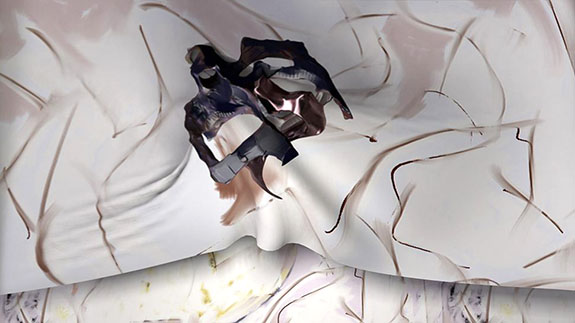 |
, HD VIDEO, 2014(1).jpg) |
Portions of the polyscrolls reference paint and canvas in a way that superficially resembles Abstract Expressionism (de Kooning and Frankenthaler in particular); while the animations within them, with their fleeting lines, highlight the ambiguity of authorship. Combined, these divergent forces can be powerful. Pollyscroll III, for example,has long passages featuring chalk-like marks (red, white and black) that beat in rhythms resembling those of muscle contractions. The organ-like conglomerations dip in and out of visibility, sliding behind opaque white sheets that roll and fold, only to reveal new sets of pulsing red muscles or glistening “bone” forms. The effect is corporeal, like seeing an animal from the inside out under clinical light.